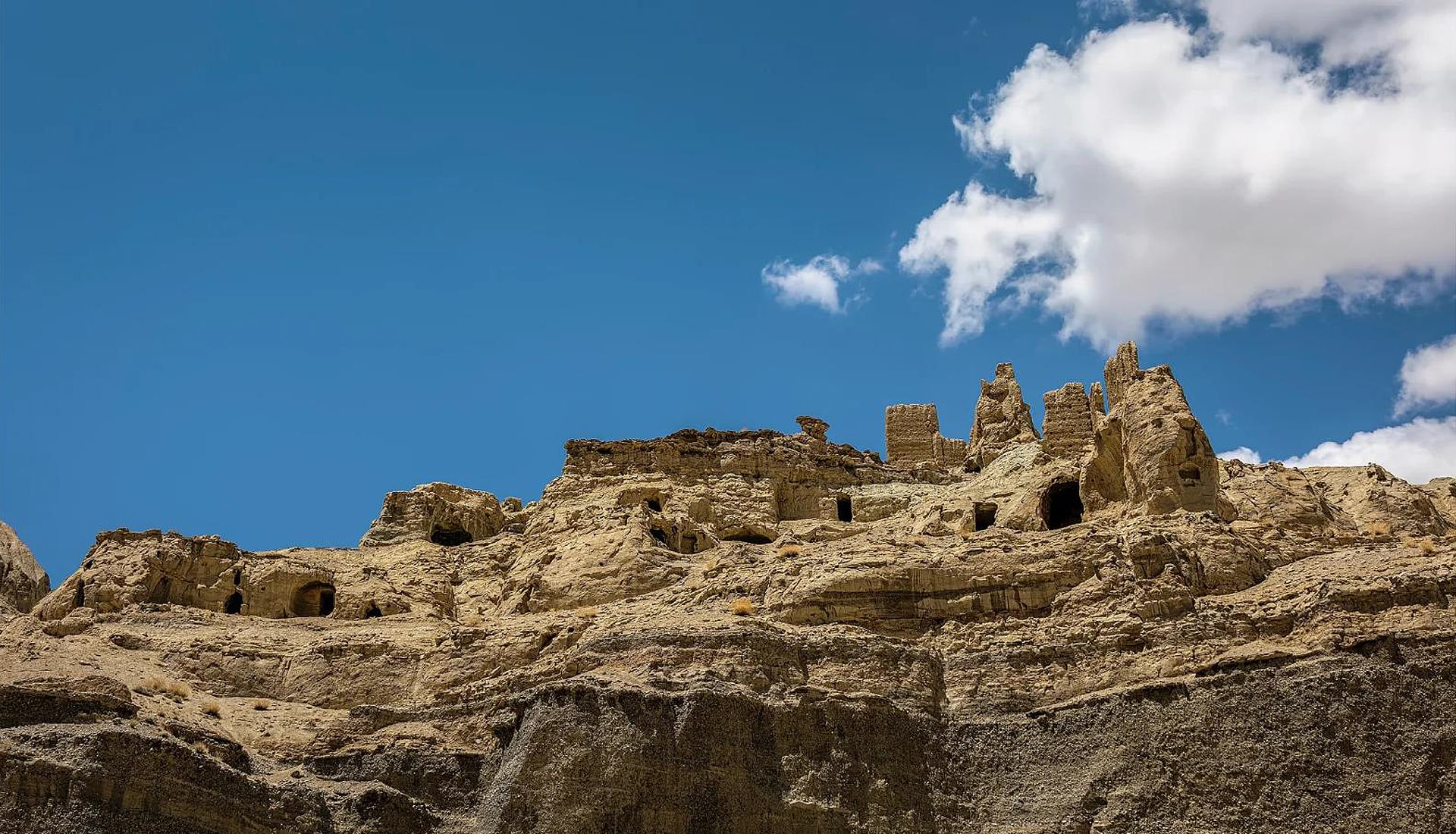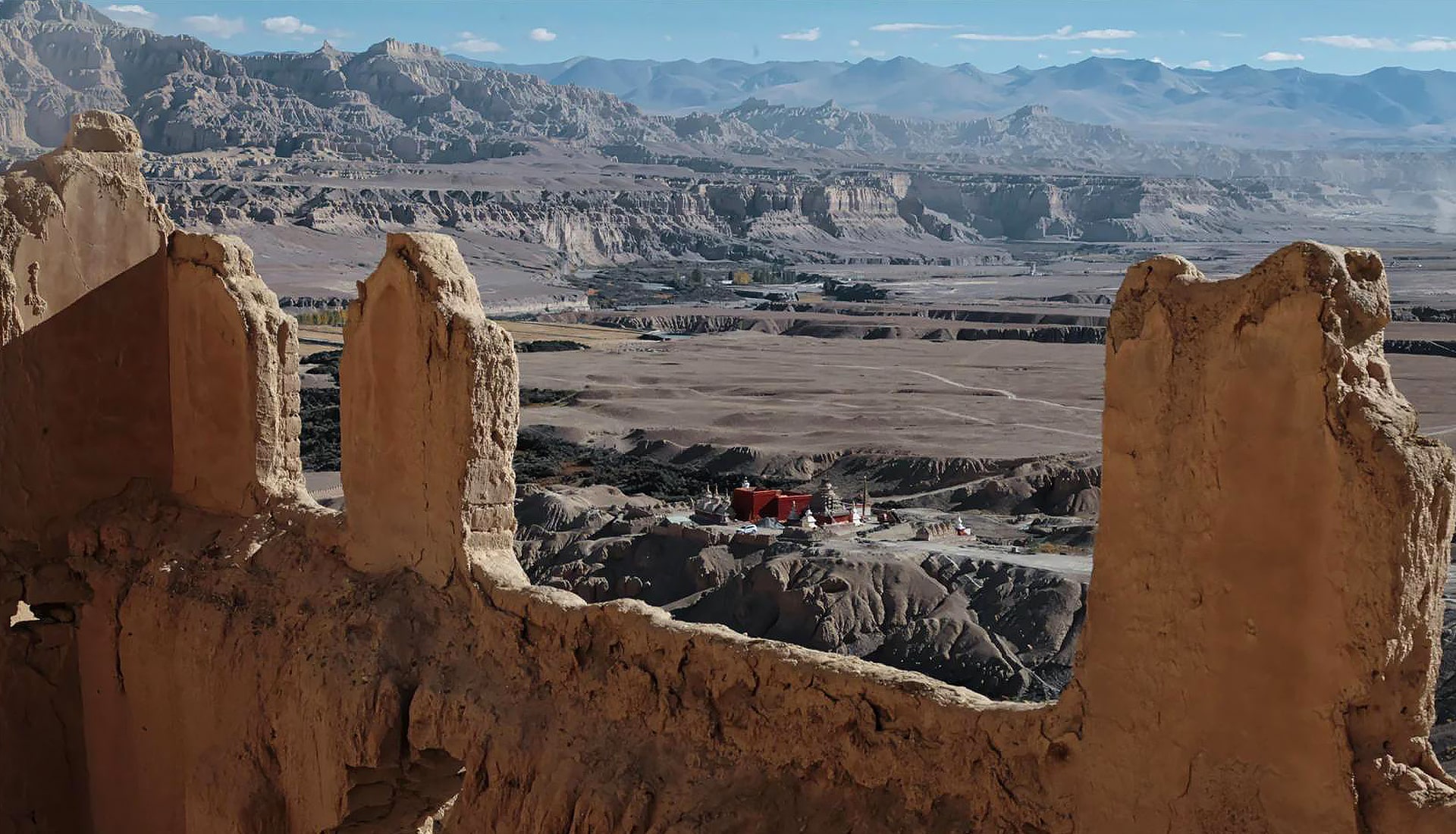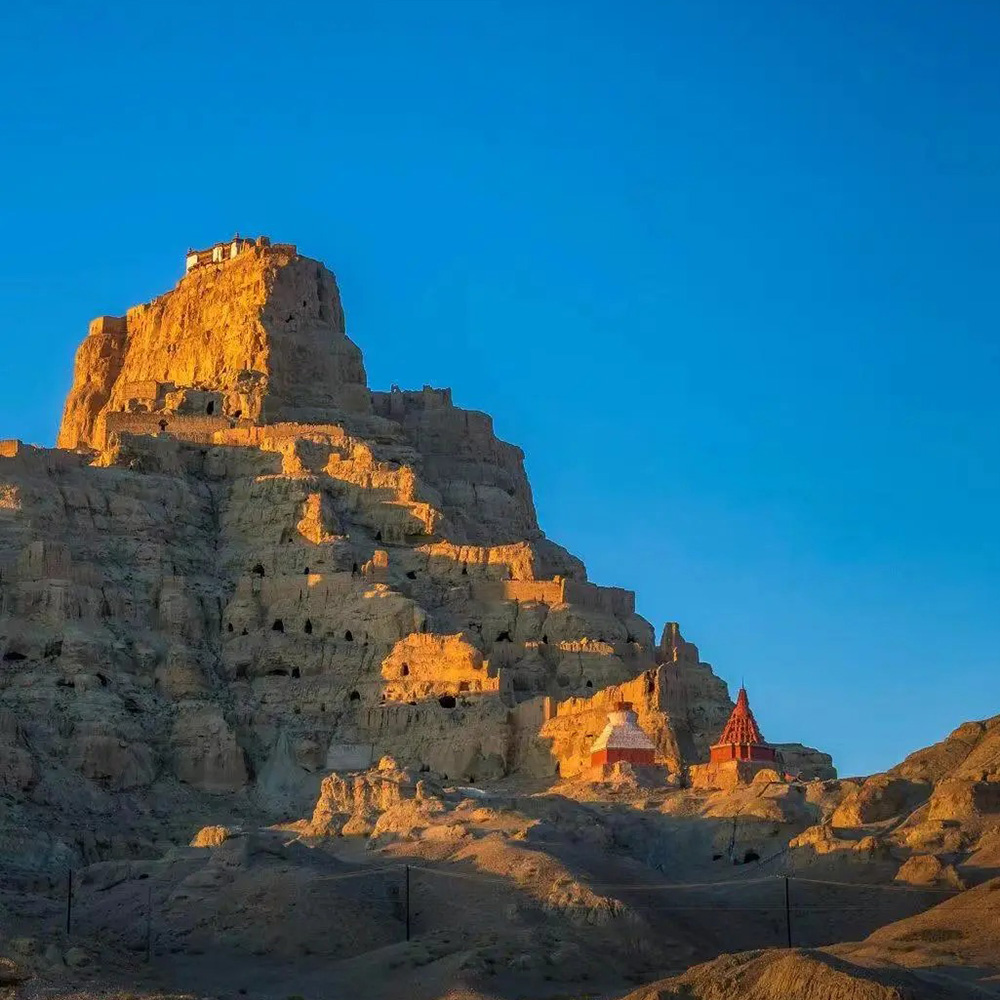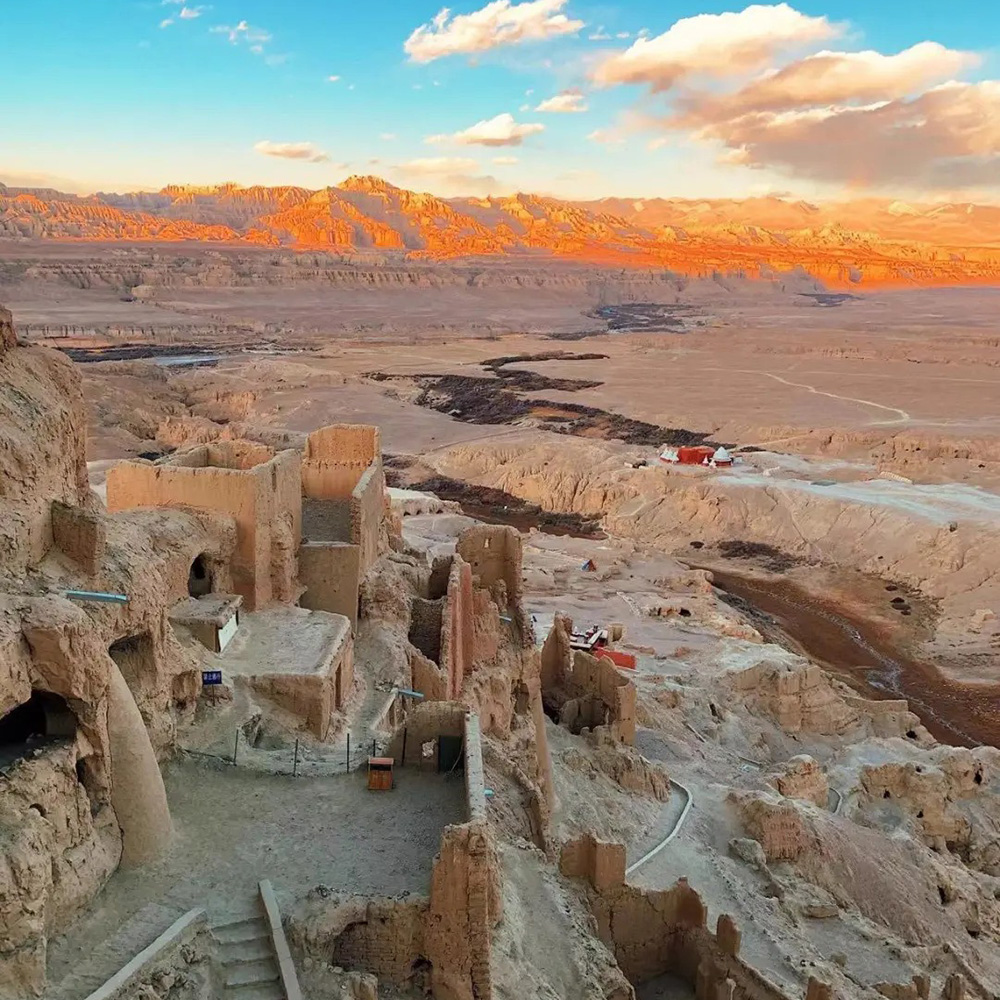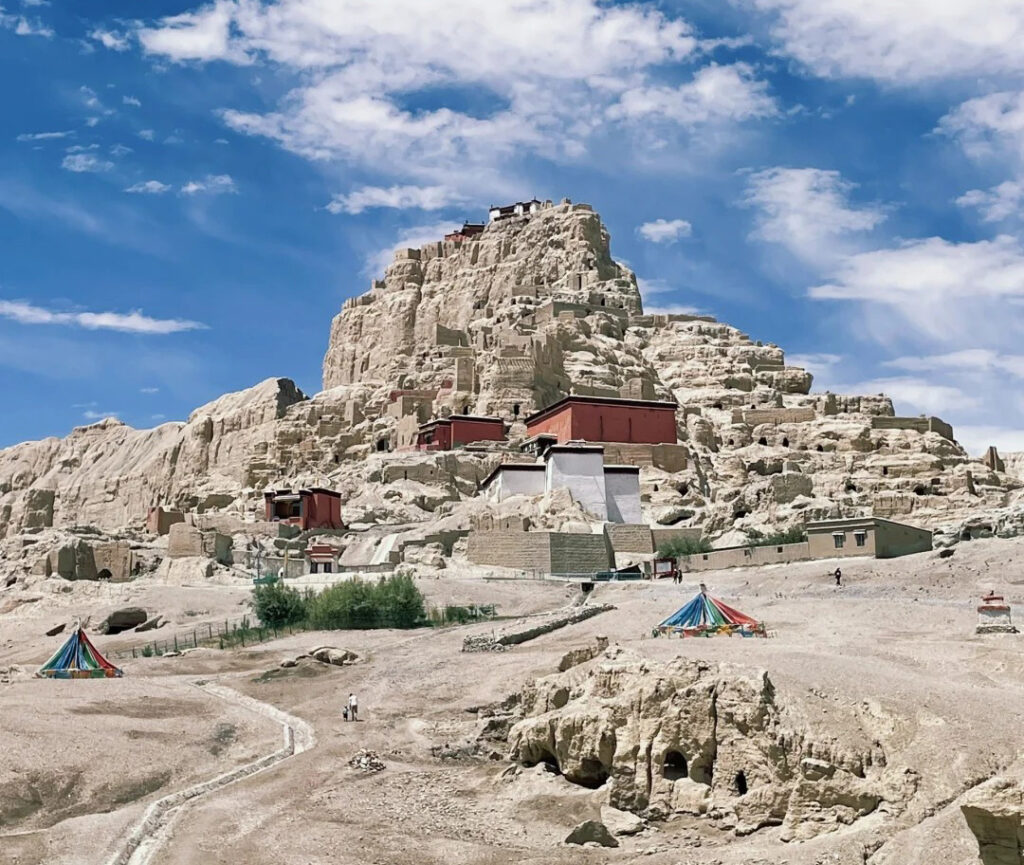Guge Ancient City: Cradle of the Tibetan Buddhist Renaissance in Western Tibet
The majestic Guge Ancient City lies on the southern bank of the Xiangqu River, northwest of Toling Town in Zanda County, Ngari Prefecture, Tibet, about 19 kilometers from the county seat. It was built by the descendants of the Tubo royal family, once commanding a force of hundreds of thousands. The Guge Kingdom thrived for over 700 years.
Historical records show that during its peak, Guge ruled over western Tibet, northern India, and the Kashmir region. Its most profound legacy lies in reviving Tibetan Buddhism, initiating the Later Propagation of the Dharma, and ushering in a millennium of widespread Buddhist devotion across the Tibetan plateau.
Guge Ruins & Royal Lineage: A Legacy Rooted in the Fall of the Tibetan Empire
Today, the vast remains of the Guge Kingdom are scattered across the desolate deserts and plateaus—crumbling walls, collapsed caves, and toppled stupas, each silently telling the story of a once-glorious era. The temples, grottoes, murals, statues, ritual objects, and scriptures left after the fall of the kingdom are countless. Together, they serve as keys to unlocking the mysteries of Guge civilization.
The royal family of Guge were direct descendants of the Tibetan emperor (Tsanpo), and thus its historical origin must be traced back to the late Tibetan Empire.
In 633 CE, Songtsen Gampo founded the Tibetan Empire. In 842 CE, the ninth Tsanpo, Langdarma, was assassinated by a monk, triggering the empire’s collapse and massive civil uprisings. Langdarma’s two sons, Yunden and Yeshe-Ö (Weisun), fought for the throne. Yunden took control of Lhasa, founding the Lhasa line; Weisun was pushed to Yoru in southeastern Tibet, where his rule was unstable.
Around 930 CE, Weisun’s grandson, Jide Nyima Gön, fled with three ministers and 100 soldiers into Western Tibet, where he established a new base. This marked the birth of the Guge Kingdom.

